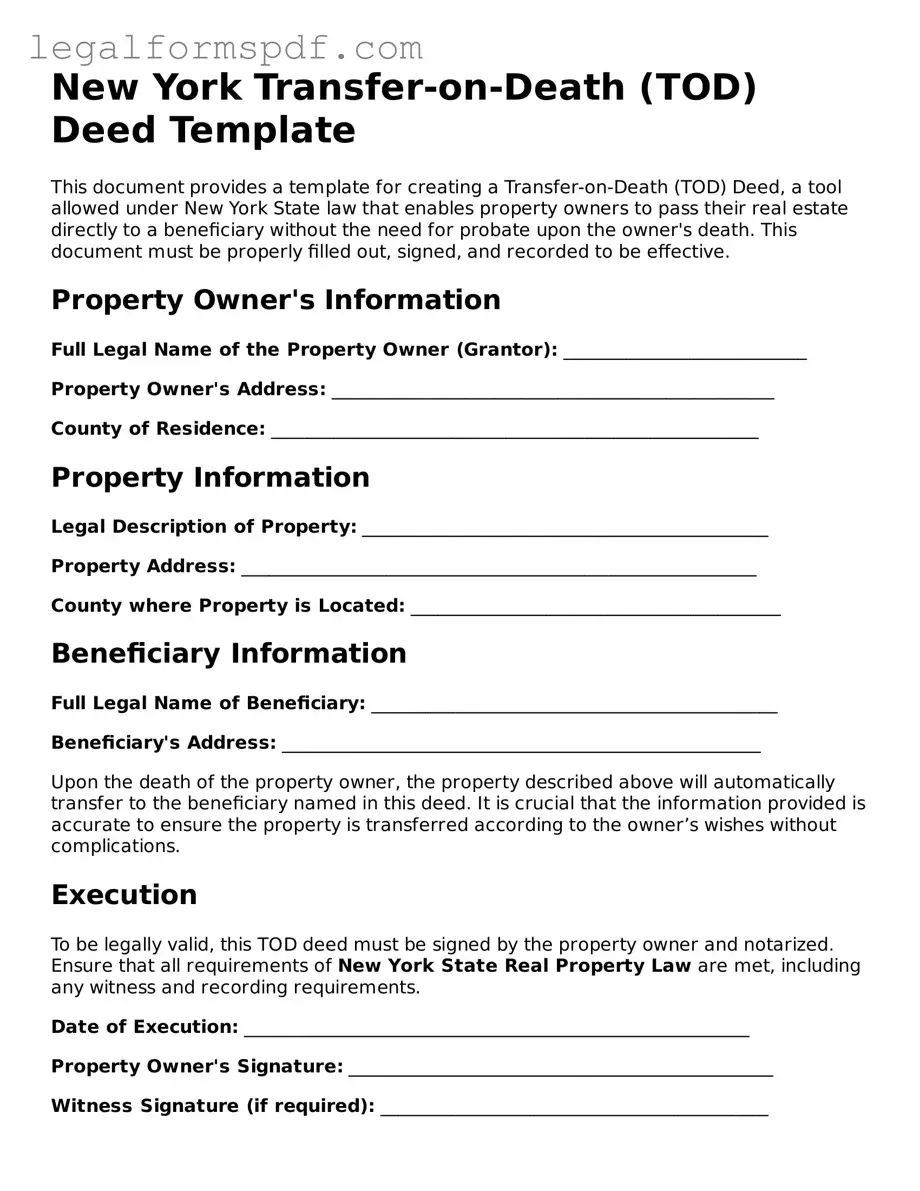New York Transfer-on-Death (TOD) Deed Template
This document provides a template for creating a Transfer-on-Death (TOD) Deed, a tool allowed under New York State law that enables property owners to pass their real estate directly to a beneficiary without the need for probate upon the owner's death. This document must be properly filled out, signed, and recorded to be effective.
Property Owner's Information
Full Legal Name of the Property Owner (Grantor): ___________________________
Property Owner's Address: _________________________________________________
County of Residence: ______________________________________________________
Property Information
Legal Description of Property: _____________________________________________
Property Address: _________________________________________________________
County where Property is Located: _________________________________________
Beneficiary Information
Full Legal Name of Beneficiary: _____________________________________________
Beneficiary's Address: _____________________________________________________
Upon the death of the property owner, the property described above will automatically transfer to the beneficiary named in this deed. It is crucial that the information provided is accurate to ensure the property is transferred according to the owner’s wishes without complications.
Execution
To be legally valid, this TOD deed must be signed by the property owner and notarized. Ensure that all requirements of New York State Real Property Law are met, including any witness and recording requirements.
Date of Execution: ________________________________________________________
Property Owner's Signature: _______________________________________________
Witness Signature (if required): ___________________________________________
Notary Public: ___________________________________________________________
Recording
After signing, this TOD deed must be recorded with the county recorder's office in the county where the property is located. Failure to record the deed before the property owner's death may invalidate the transfer.
Disclaimer
This template is provided as general information and not legal advice. Laws and procedures can change. Always consult with a legal professional before executing a Transfer-on-Death deed.
